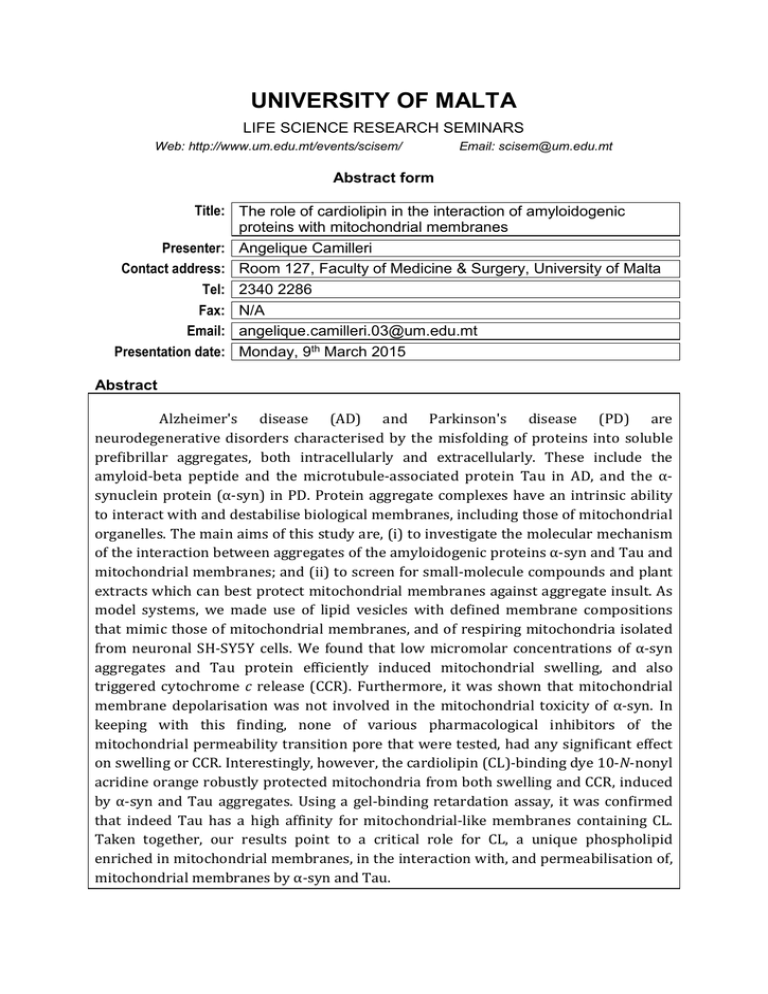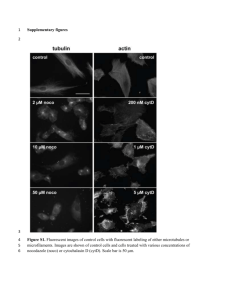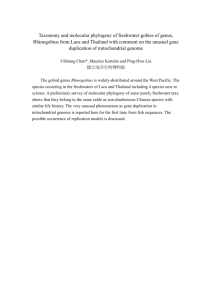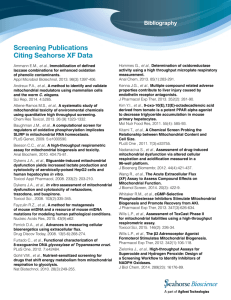UNIVERSITY OF MALTA
advertisement

UNIVERSITY OF MALTA LIFE SCIENCE RESEARCH SEMINARS Web: http://www.um.edu.mt/events/scisem/ Email: scisem@um.edu.mt Abstract form Title: The role of cardiolipin in the interaction of amyloidogenic proteins with mitochondrial membranes Presenter: Angelique Camilleri Contact address: Room 127, Faculty of Medicine & Surgery, University of Malta Tel: 2340 2286 Fax: N/A Email: angelique.camilleri.03@um.edu.mt Presentation date: Monday, 9th March 2015 Abstract Alzheimer's disease (AD) and Parkinson's disease (PD) are neurodegenerative disorders characterised by the misfolding of proteins into soluble prefibrillar aggregates, both intracellularly and extracellularly. These include the amyloid-beta peptide and the microtubule-associated protein Tau in AD, and the αsynuclein protein (α-syn) in PD. Protein aggregate complexes have an intrinsic ability to interact with and destabilise biological membranes, including those of mitochondrial organelles. The main aims of this study are, (i) to investigate the molecular mechanism of the interaction between aggregates of the amyloidogenic proteins α-syn and Tau and mitochondrial membranes; and (ii) to screen for small-molecule compounds and plant extracts which can best protect mitochondrial membranes against aggregate insult. As model systems, we made use of lipid vesicles with defined membrane compositions that mimic those of mitochondrial membranes, and of respiring mitochondria isolated from neuronal SH-SY5Y cells. We found that low micromolar concentrations of α-syn aggregates and Tau protein efficiently induced mitochondrial swelling, and also triggered cytochrome c release (CCR). Furthermore, it was shown that mitochondrial membrane depolarisation was not involved in the mitochondrial toxicity of α-syn. In keeping with this finding, none of various pharmacological inhibitors of the mitochondrial permeability transition pore that were tested, had any significant effect on swelling or CCR. Interestingly, however, the cardiolipin (CL)-binding dye 10-N-nonyl acridine orange robustly protected mitochondria from both swelling and CCR, induced by α-syn and Tau aggregates. Using a gel-binding retardation assay, it was confirmed that indeed Tau has a high affinity for mitochondrial-like membranes containing CL. Taken together, our results point to a critical role for CL, a unique phospholipid enriched in mitochondrial membranes, in the interaction with, and permeabilisation of, mitochondrial membranes by α-syn and Tau.







